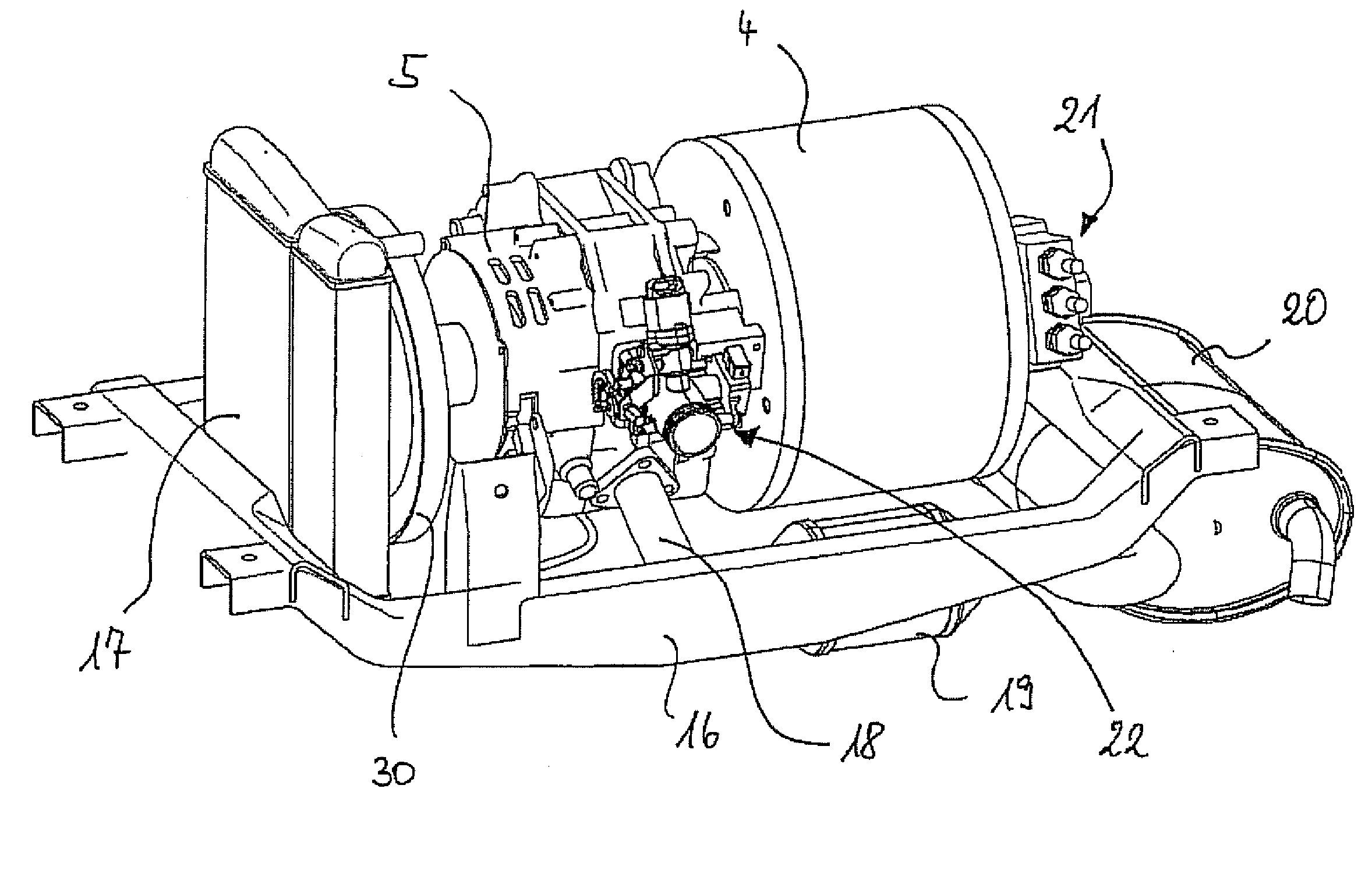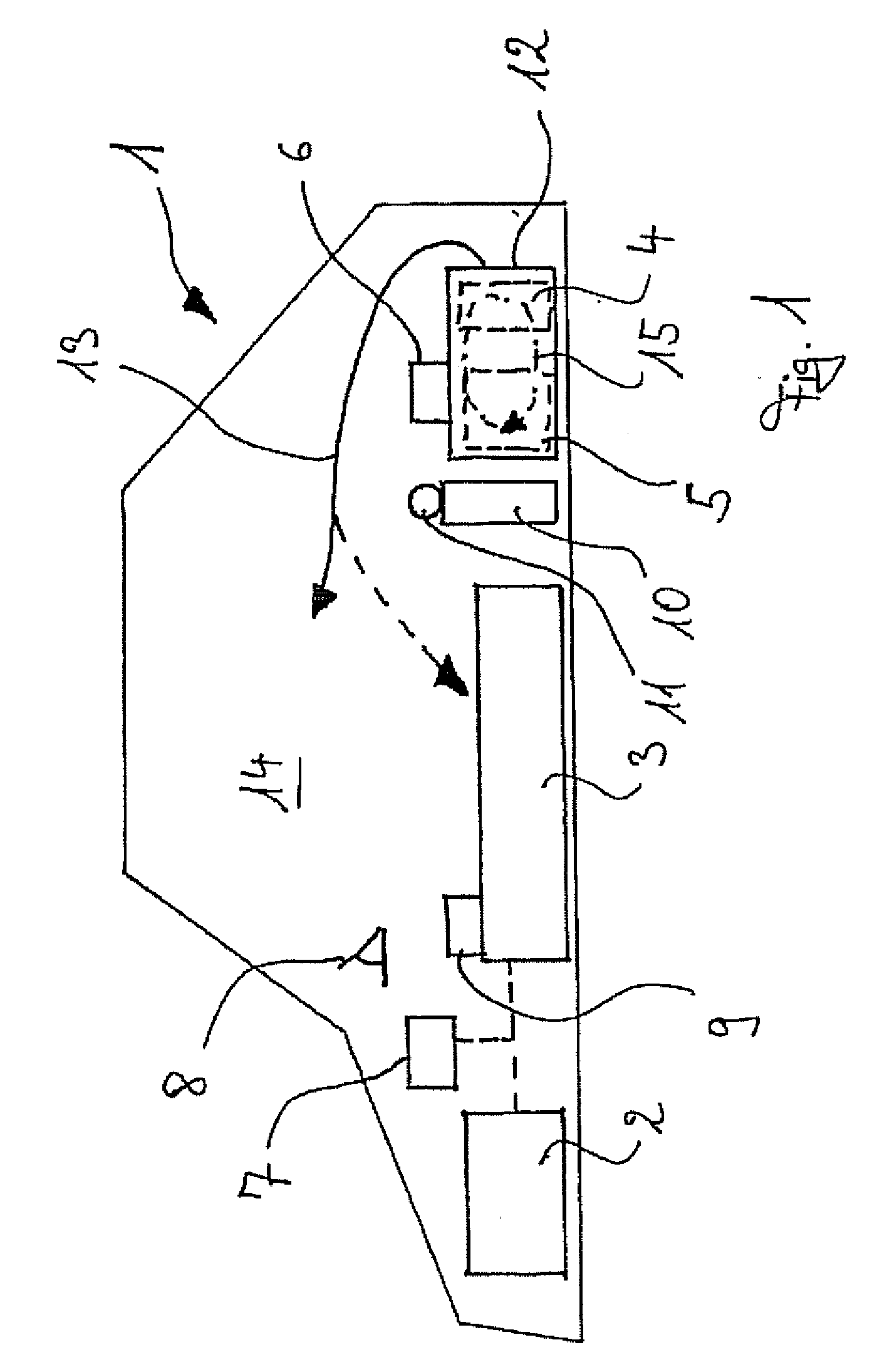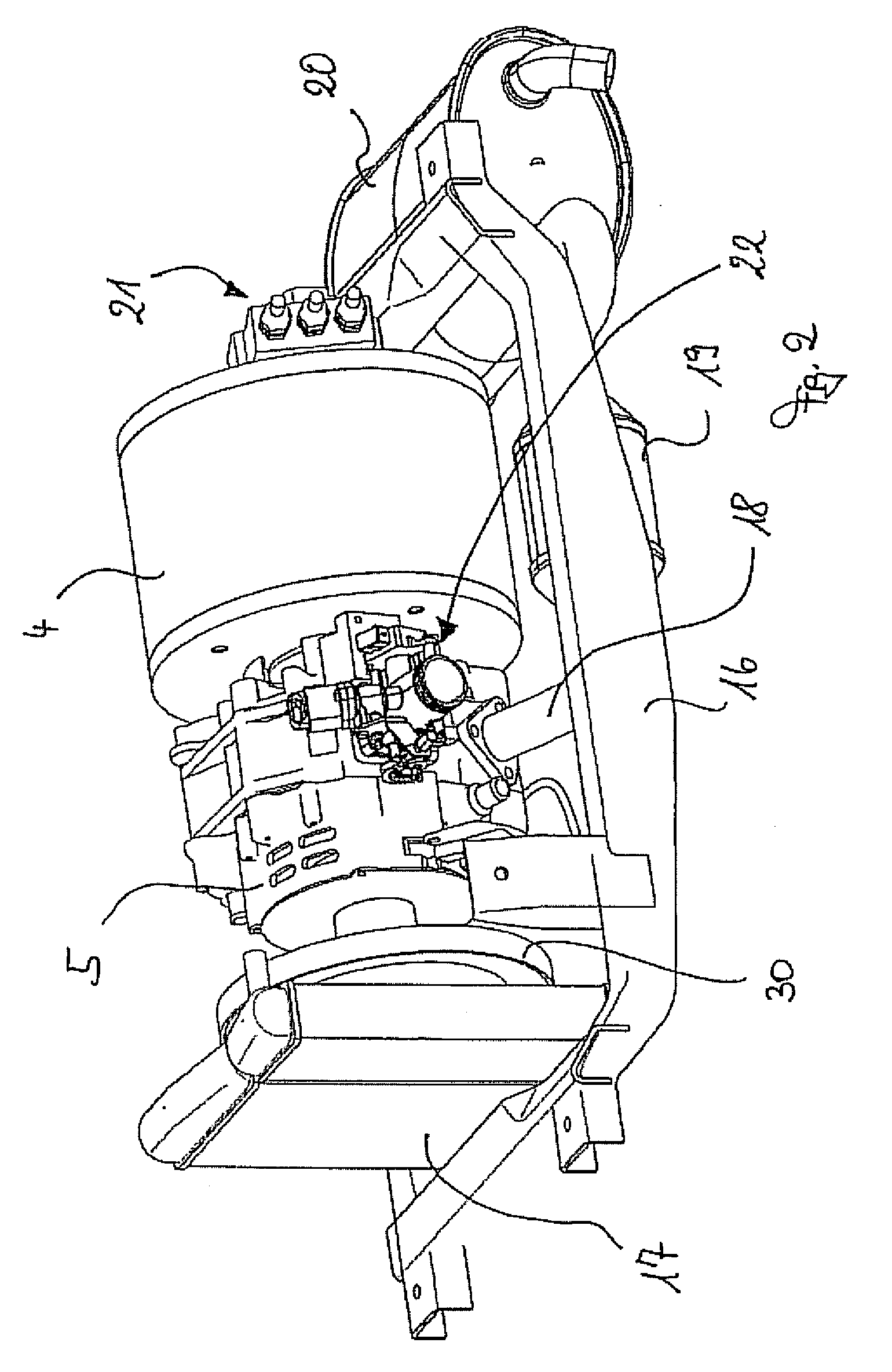Electric vehicle with increased range
a technology of electric vehicles and drive mechanisms, applied in the direction of electric energy vehicles, propulsion by batteries/cells, propulsion using engine-driven generators, etc., can solve problems such as torque generation, and achieve the effects of improving increasing operational safety, and expanding the range of electric vehicles
- Summary
- Abstract
- Description
- Claims
- Application Information
AI Technical Summary
Benefits of technology
Problems solved by technology
Method used
Image
Examples
Embodiment Construction
[0030]In an exemplary configuration and schematic view, FIG. 1 shows an electric vehicle 1. The electric vehicle 1 has at least one electric motor 2, at least one storage battery 3, and also a generator 4 and a Wankel engine 5, shown with dashed lines and arranged as a composite component in the electric vehicle 1. With each associated drive axle, the electric motor or motors 2 form the drive train of the electric vehicle 1. In principle, however, the generator 4 with the Wankel engine 5 is a standalone energy generator with which electrical current can be generated for the storage battery 3. The generator 4 and the Wankel engine 5 are advantageously arranged here on a common frame. For example, a control unit 6 can also be provided at or on the frame. The control unit 6 is, for example, a control device that is in contact via a bus system with a higher-level, second control device 7. The higher-level, second control device is capable, in particular, of operating the electric motor ...
PUM
 Login to View More
Login to View More Abstract
Description
Claims
Application Information
 Login to View More
Login to View More - R&D
- Intellectual Property
- Life Sciences
- Materials
- Tech Scout
- Unparalleled Data Quality
- Higher Quality Content
- 60% Fewer Hallucinations
Browse by: Latest US Patents, China's latest patents, Technical Efficacy Thesaurus, Application Domain, Technology Topic, Popular Technical Reports.
© 2025 PatSnap. All rights reserved.Legal|Privacy policy|Modern Slavery Act Transparency Statement|Sitemap|About US| Contact US: help@patsnap.com



